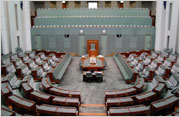Japan's Kyushu Electric Power Company restarted the number one reactor at the Sendai Nuclear Power Plant in the southwest of the country on Tuesday. It's the first restart of a reactor since the triple meltdown at the Fukushima Daiichi Nuclear plant in northern Japan in 2011 and comes despite strong public safety concerns.
A cadre of protesters stood outside the gates of the plant, while workers inside pulled the control rods. Former Prime Minister Naoto Kan rallied the demonstrators. He was in office at the time of the Fukushima disaster, which he told the crowd had "exposed the myth of safe and cheap nuclear power, which turned out to be dangerous and expensive".
But the power companies see it differently. Rather than lead to the charge to renewables like Solar, Wind, and Tidal power, they've been paying for costly fossil fuels to meet Japan's needs. And the need has been great during a brutally hot summer with daytime temperatures exceeding 35C degrees for several weeks straight. As a result, household electricity bills surged 25.2 percent over the four years since the Fukushima disaster, as nuclear plant after nuclear plant was taken offline.
Local residents say they are worried about what the multitude of active volcanoes in the region might mean to the safety of the reactors. They want the plant disassembled and gone altogether, not just kept offline by control rods inserted between the fuel rods, preventing the chain reaction needed to generate power.
The restart is a major boost for hawkish Prime Minister Shinzo Abe, who insists that nuclear power is the only way to lower electricity prices and shore up the economy. It could further damage his cabinet's approval rating, already starting to sink because of his controversial plans to "reinterpret" the pacifist constitution and involve Japanese troops in more foreign entanglements alongside the US. The Abe government insists more safety standards are in place to prevent a repeat of the Fukushima meltdowns.
"It is important for the country's energy policy that the government go ahead with reactor restarts once they are confirmed as safe," said government spokesman Yoshihide Suga. "The biggest priority is safety."
The reactor, which is located in Kagoshima Prefecture on Kyushu despite sharing the name of a northern city, is expected to reach criticality later on Tuesday. A second reactor is slated for restart in October.








 Create PDF
Create PDF Print
Print Email to friend
Email to friend